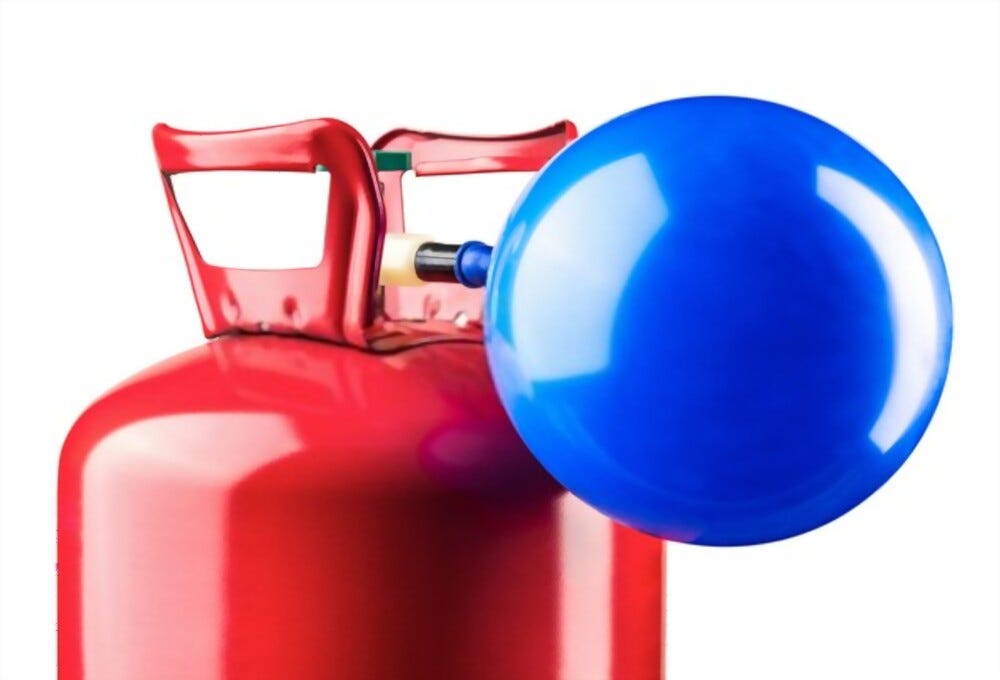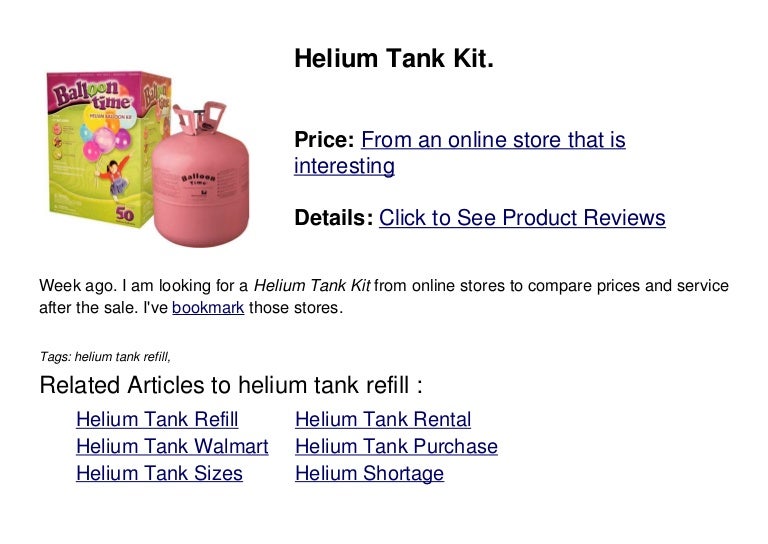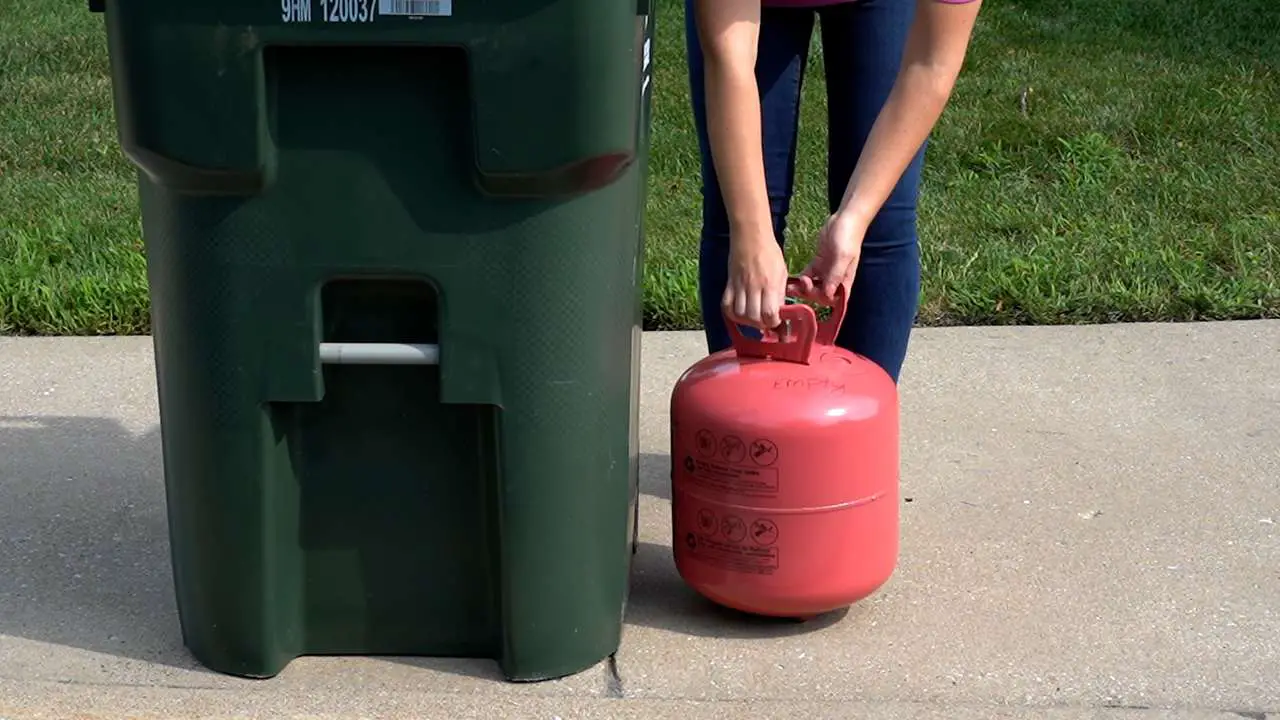Where Do I Refill My Helium Tank

One of the most frustrating experiences for any homeowner is a malfunctioning HVAC system. You crank up the thermostat, expecting warm, cozy air in the winter, or icy relief from the summer heat, but instead, you're met with lukewarm air, a system that cycles on and off constantly, or worse, complete silence. This can quickly turn a comfortable home into an uncomfortable and potentially unhealthy environment.
This article will guide you through a practical troubleshooting process to identify and potentially resolve common HVAC heating and cooling issues. We'll break down the process into manageable steps, highlighting what you can safely check yourself and when it's crucial to call in a qualified HVAC professional. Remember, safety is paramount; when in doubt, always seek professional assistance.
Step 1: Initial Assessment and Simple Checks (No Tools Required)
Before diving into more complex troubleshooting, let's start with the basics. These initial checks require no tools and can often pinpoint obvious problems.
1. Thermostat Setting and Operation
This might seem obvious, but it's surprising how often the issue lies in a simple thermostat setting. Double-check these points:
- Mode Selection: Is the thermostat set to 'Heat' in the winter and 'Cool' in the summer? A common mistake is leaving it on 'Auto' and not realizing the system isn't responding to the current temperature.
- Temperature Setting: Is the set temperature significantly higher (in winter) or lower (in summer) than the current room temperature? The system won't kick on if the setpoint is already met.
- Battery Level: If you have a digital thermostat, check the battery level. Low batteries can cause erratic behavior or complete failure. Replace the batteries if necessary.
- Programmed Schedules: Review your programmed schedules. Are there any settings that might be inadvertently preventing the system from running at the desired times? For instance, a setback temperature during the day that you've forgotten about.
Action: Adjust the thermostat settings, replace the batteries, and review programmed schedules.
2. Power Supply
Ensure your HVAC system is receiving power. Check these:
- Circuit Breaker: Locate the circuit breaker for your HVAC system in your electrical panel. Is the breaker tripped (in the 'off' or middle position)? If so, flip it fully to the 'off' position and then back to the 'on' position. If it trips again immediately, there's likely a more serious electrical issue that requires professional attention. Do not repeatedly reset a tripped breaker.
- Emergency Shut-Off Switch: Many HVAC systems have an emergency shut-off switch, often located near the furnace or air handler. Make sure this switch is in the 'on' position. It might look like a standard light switch.
Action: Reset the circuit breaker (if not repeatedly tripping) and ensure the emergency shut-off switch is in the 'on' position.
3. Airflow Obstruction
Poor airflow is a common culprit behind heating and cooling problems. Check these potential obstructions:
- Air Filters: This is the most frequent cause of airflow issues. A dirty air filter restricts airflow, forcing your system to work harder and less efficiently. Replace your air filter regularly, typically every 1-3 months, depending on the type of filter and your home's environment. A clogged filter can also lead to the system overheating or freezing up.
- Supply Registers and Return Grills: Ensure that all supply registers (vents blowing air into rooms) and return grills (vents drawing air back to the system) are open and unobstructed. Furniture, rugs, or curtains can block airflow.
- Outdoor Unit (Condenser): If you have a central air conditioning system, check the outdoor unit (condenser). Make sure it's free of debris such as leaves, branches, and snow. These obstructions can significantly reduce its efficiency.
Action: Replace dirty air filters, clear obstructions from supply registers and return grills, and remove debris from the outdoor unit.
Step 2: More Detailed Inspection (Basic Equipment Required)
If the initial checks didn't resolve the issue, these steps require some basic equipment and a bit more investigation.
1. Inspecting the Blower Motor
The blower motor circulates air throughout your home. If it's not working correctly, you won't get adequate heating or cooling.
- Safety First: Turn off the power to your HVAC system at the circuit breaker before inspecting the blower motor.
- Location: The blower motor is typically located inside the air handler (often near the furnace).
- Visual Inspection: Look for any obvious signs of damage, such as burnt wires, loose connections, or a buildup of dust and debris. A small vacuum cleaner with a brush attachment can be used to carefully remove dust.
- Testing the Capacitor (Requires a Multimeter - Use with Caution): The capacitor helps start and run the blower motor. A faulty capacitor is a common cause of blower motor failure. To test the capacitor, you'll need a multimeter that can measure capacitance. Important: Capacitors can store an electrical charge even after the power is turned off. Discharge the capacitor before testing by shorting the terminals with an insulated screwdriver. Use the multimeter to measure the capacitance. If the reading is significantly lower than the rating printed on the capacitor, it's likely faulty and needs to be replaced. This step is best left to a qualified technician if you're not comfortable working with electricity.
Equipment Required: Screwdriver, small vacuum cleaner (optional), multimeter (for capacitor testing - use with caution).
Action: Visually inspect the blower motor for damage and clean any debris. If you're comfortable and have the necessary equipment, test the capacitor. If you suspect a faulty capacitor, it's best to consult a professional.
2. Checking the Flame Sensor (Gas Furnaces Only)
If you have a gas furnace, the flame sensor is a safety device that detects the presence of a flame. If the sensor doesn't detect a flame, it will shut off the gas supply to prevent a dangerous gas buildup.
- Safety First: Turn off the power to your furnace at the circuit breaker before inspecting the flame sensor.
- Location: The flame sensor is typically a small metal rod located near the burner assembly.
- Visual Inspection: Carefully remove the flame sensor (usually held in place by a screw). Inspect it for carbon buildup. Carbon buildup can insulate the sensor and prevent it from properly detecting the flame.
- Cleaning the Flame Sensor: Use a piece of fine-grit sandpaper or steel wool to gently clean the flame sensor, removing any carbon buildup.
- Reinstall and Test: Reinstall the flame sensor and turn the power back on to the furnace. Observe the furnace startup sequence. If the furnace shuts down shortly after ignition, the flame sensor may still be faulty or there may be another issue.
Equipment Required: Screwdriver, fine-grit sandpaper or steel wool.
Action: Clean the flame sensor and reinstall it. If the furnace continues to shut down, the flame sensor may need to be replaced, or there may be other underlying issues.
3. Inspecting Ductwork
Leaky ductwork can significantly reduce the efficiency of your HVAC system. Conditioned air escapes through leaks, forcing your system to work harder to maintain the desired temperature.
- Visual Inspection: Inspect your accessible ductwork for any obvious leaks or damage. Look for gaps, cracks, or loose connections. Pay particular attention to joints and seams.
- Feeling for Air Leaks: With the system running, carefully feel around ductwork joints and seams for air leaks. You might feel a draft.
- Simple Repairs: For small leaks, you can use aluminum foil tape (not duct tape) to seal them. Make sure the surface is clean and dry before applying the tape.
Equipment Required: Flashlight, aluminum foil tape.
Action: Inspect ductwork for leaks and seal any small leaks with aluminum foil tape. For larger or more complex ductwork issues, consider hiring a professional to seal and insulate your ducts.
Step 3: When to Call a Professional
While many HVAC issues can be addressed with simple troubleshooting, some problems require the expertise of a qualified HVAC technician. These situations often involve complex repairs, potentially dangerous components, or specialized diagnostic tools.
1. Refrigerant Leaks (Air Conditioning)
Refrigerant is the lifeblood of your air conditioning system. If you suspect a refrigerant leak (e.g., the system is blowing warm air, ice is forming on the coils), do not attempt to repair it yourself. Refrigerant handling requires specialized equipment and certification. Leaking refrigerant is also harmful to the environment.
Signs of a Refrigerant Leak:
- Blowing warm air when the AC is set to cool.
- Ice forming on the indoor or outdoor unit coils.
- Hissing or bubbling sounds near the units.
- Significantly higher energy bills without a change in usage.
Action: Contact a qualified HVAC technician immediately.
2. Gas Leaks (Furnaces)
If you suspect a gas leak near your furnace, evacuate the area immediately and call your gas company or 911. Gas leaks are extremely dangerous and can lead to explosions or carbon monoxide poisoning. Do not attempt to locate or repair the leak yourself.
Signs of a Gas Leak:
- A strong smell of natural gas (often described as a rotten egg smell).
- Hissing or whistling sounds near gas lines or appliances.
- Dead or dying vegetation in the vicinity of gas lines.
- Feeling dizzy, nauseous, or experiencing headaches.
Action: Evacuate the area and call your gas company or 911 immediately.
3. Electrical Issues
Working with electrical components can be dangerous. If you're not comfortable working with electricity or you encounter any of the following situations, call a qualified electrician or HVAC technician:
- Repeatedly tripping circuit breakers.
- Burnt wires or components.
- Electrical shocks or sparks.
- Unfamiliar wiring configurations.
Action: Contact a qualified electrician or HVAC technician.
4. Complex Mechanical Problems
Some HVAC problems require specialized diagnostic tools and expertise to diagnose and repair. These include:
- Compressor failure (air conditioning).
- Heat exchanger cracks (furnaces).
- Control board malfunctions.
- Issues with the blower motor requiring motor replacement or extensive electrical work.
Action: Contact a qualified HVAC technician.
5. When in Doubt
If you've tried the basic troubleshooting steps and are still unsure of the problem, or if you simply feel uncomfortable working on your HVAC system, it's always best to err on the side of caution and call a professional. An experienced HVAC technician can accurately diagnose the problem and perform the necessary repairs safely and efficiently.
By following these troubleshooting steps, you can often identify and resolve common HVAC issues yourself. Remember to prioritize safety and call a professional when the problem is beyond your skill level or involves potentially dangerous components. A well-maintained HVAC system will provide you with years of comfortable and efficient heating and cooling.










